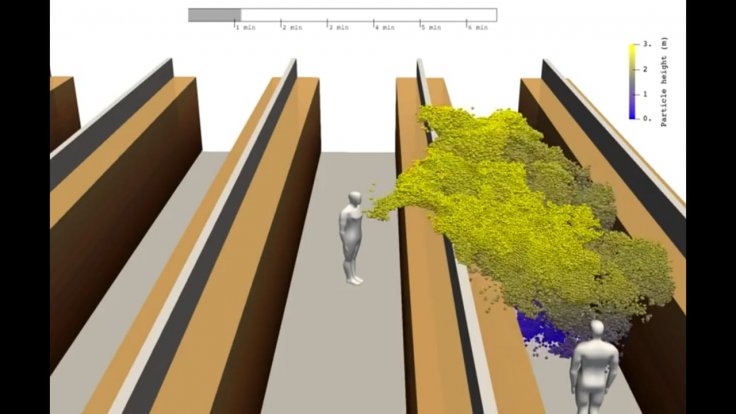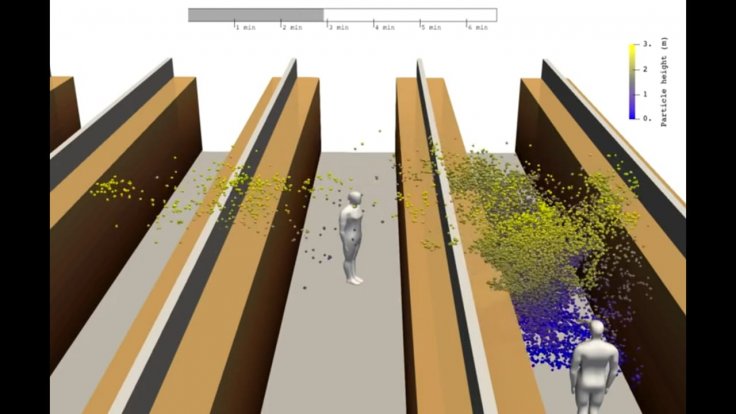Governments and organizations across the world are struggling to contain the spread of COVID-19. While a vaccine or a viable treatment is still far away, avoiding crowded and enclosed places is being looked at as one of the only ways of slowing down its transmission. A new study by Finnish researchers provides worrying evidence that highlights the need to follow this recommended measure.
Researchers from four Finnish universities—Aalto University, Finnish Meteorological Institute, VTT Technical Research Centre of Finland and the University of Helsinki—have created a model that depicts how aerosol particles from the respiratory tract expelled into the air through a cough or sneeze act once they are airborne.
It was found that they could stay in the air for long durations. The model was developed using a supercomputer and involved over 30 researchers across multiple disciplines.

Modelling a scenario
The scenario modeled by the researchers was simple, yet one that was most likely to play out. In the scenario, a person coughs between shelves in an aisle, much like the ones that are found at grocery stores and supermarkets. They also took into consideration ventilation factors. All four collaborating universities performed the modeling independently with starting the conditions used being the same.

The final result obtained by all the four research teams were, however, the same. The aerosol-cloud produced by the cough spreads beyond the immediate surroundings of the coughing person and dilutes as it disperses. Nevertheless, the entries process can take a span of several minutes.
Ville Vuorinen from Aalto University explained in a statement, "Someone infected by the coronavirus, can cough and walk away, but then leave behind extremely small aerosol particles carrying the coronavirus. These particles could then end up in the respiratory tract of others in the vicinity."
Avoiding crowded indoor areas
Several studies have examined the spread of diseases via social networks. The infection models employed in these studies have illustrated that the rate of transmission of viruses can be decelerated or halted completely with the decrease of mobility at 'nodal points'. These are enclosed places where large groups of people congregate, such as restaurants, stores and public transportation. Interaction with infectious droplets has been accepted as the primary cause of COVID-19. Therefore, avoiding crowded indoor areas reduces the risk of infection.

Aerosol movement in the air
The participating researchers modeled the movement of aerosol particles that were smaller than 20 micrometers in the air. Exceedingly tiny particles do not sink to the floor but rather continue to move along air currents or float in the same position for extended periods of time.
In the case of a dry cough—a primary symptom of COVID-19—the size of the particles are usually lesser than 15 micrometers. However, particles smaller than this can also potentially carry infectious pathogens. For example, studies have found that influenza A virus can be found in particles lesser than 5 micrometers in size

Modelled using a supercomputer
The model was created and simulated using the supercomputer from the CSC – Finnish IT Center for Science Ltd and the results were represented through 3D visualization. Owing to the high computing ability of the supercomputer, initial results were arrived upon in nearly a week.

The physics behind the phenomenon in question is similar to those found in earlier studies. Better visualization of the action of aerosol particles for improved understanding of aerosol behavior is next on the consortium's plan. They also aim to refine the model. The results obtained will be analysed by virologists and experts in infectious diseases, and asses their significance with regards to the data collected on coronaviruses and coronavirus infections.









